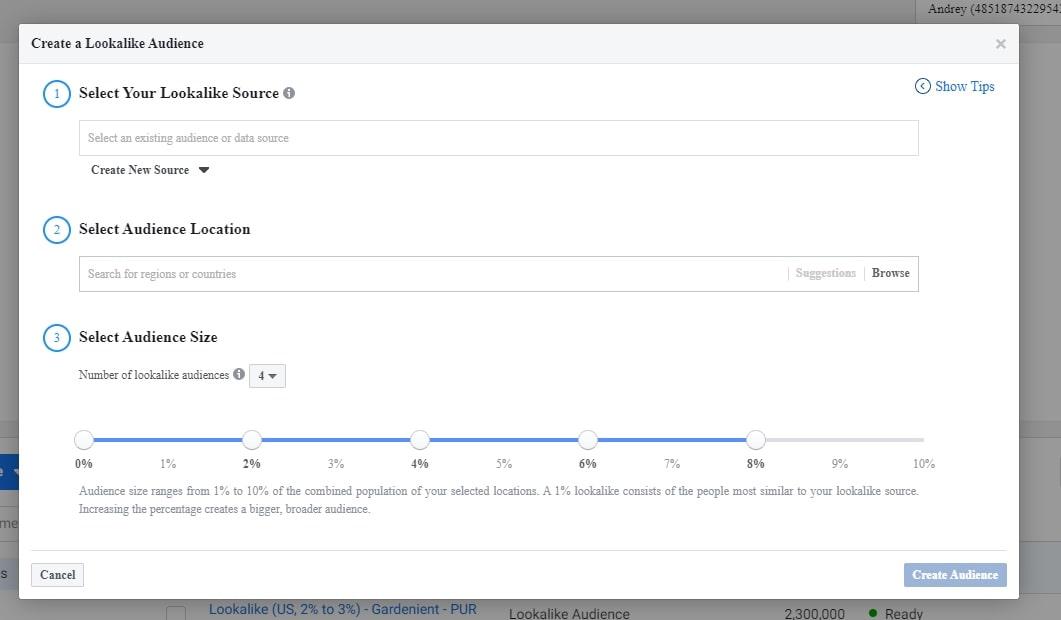Ecommerce Testing: This Is Why You Need To Test Things Before Investing Money Into Marketing

Business requires thinking and being able to predict how the market will react. The problem is no analysis can be 100% accurate. In these cases, you need ecommerce testing! Keep reading to learn what to test and how.
On the AliDropship blog, we keep telling our readers, who want to start a dropshipping business, about how important it is to test everything you do or use. Why?
Unfortunately, your education, talent or intuition cannot always be right. For instance, sometimes even after a thorough analysis, entrepreneurs target a wrong audience. After all, it’s almost impossible to take every single detail into consideration.
In other words, at each step of your sale process, there can be surprises awaiting you. They can be both beneficial and harmful. In order to minimize risks or maximize benefits, one needs ecommerce testing.
But before we begin, remember this:
- First of all, you don’t test each and every part of your marketing strategy at once. Test them one by one. If something works well, leave it be! But if you’re not happy with something (for example, the number of site visitors from social media), that’s where you might want to start testing.
- Testing costs money! Even if you set the minimum budget to your ad sets in Facebook, you will still have to spend a lot before you get reliable results. Our team usually runs tests for about a week.
- Ecommerce testing for dropshipping is an advanced approach. It’s difficult, expensive and isn’t always reliable. But it can reveal opportunities you couldn’t see before. For example, you can discover a target audience which converts much better than the one you target right now. This allows you to invest in promotion more efficiently.
Now, let’s get started! Here’s what you can test.
Ecommerce testing: Ad creatives
Ads are the part which converts social media users into website visitors. First of all, one can test different ad types and formats to see which brings more traffic to their online store. Experience shows that video ads work better than other types, so you probably want to focus on these.
But you can also test a variety of ads. For example, even if you decide to follow our recommendation and use video ads, you should make at least two or three creatives and test them.
The safest way to do it is to start an advertising campaign and launch a number of ad sets (one ad creative per each) with a minimal budget. Then simply watch how they perform. Turn off the ones that obviously bring little to no results; keep waiting for at least a couple of days if there are several ads that perform well and pick the best one after that.
This is how it works in theory, but what exactly should you do to make ads different from each other? This is what you should think about.
1. Testing ad picture
If you choose to use pictures for your ads, obviously you can experiment with the images. It is actually crucial which one you pick because images are what social media users see in the first place.
An ideal picture shows what kind of item you’re advertising, what it does and how it works. This is how you inform potential clients of your product. If a Facebook user sees something weird and can’t tell how this thing works is a second, he or she will just keep scrolling the feed.
Testing ad pictures will show you which one won’t let that happen.
2. Video thumbnails
Same goes for thumbnails you want to use for video ads. To see its content, a user has to play the video. But if the thumbnail doesn’t look interesting, funny, intriguing or attractive, people won’t touch it. That’s why it’s a good idea to test a number of thumbnails for the same video.
For this part, use the same criteria as for ad images: ideally, you need to explain what your product is, what it does and how it works. Read this article for more tips on how to make the best-performing video thumbnails.
3. Ad copies
A good picture or thumbnail can catch a user’s attention. But it’s not enough to make them click on the ad. So, the next step of your ecommerce testing agenda should be the ad’s content.
In case of image-based ads, pay attention to the texts. It’s difficult to tell what can be beneficial and what could hurt your ads since it depends a lot on the type of product you promote. But consider these tips:
- Make ad copies short and clear. Nobody wants to read small fonts or analyze long paragraphs. Go for simple and comprehensible phrases.
- Don’t describe your product’s features. Describe the benefits buyers will enjoy after purchasing it.
- Make sure to place a call to action in your ad such as “Shop now”, “Click here”, etc.
- If applicable, try informing users of sales, promotions, discounts and any other bonuses you can offer. As a rule, these details trigger interest very well.
4. Opening part of video ads
Just like with ad copies, you can also experiment with the content of your video ads. However, I recommend paying more attention to the first three seconds of your videos as this is often the segment which determines whether people will or will not watch the video to the end.
So, if you don’t want to spend more time by testing the rest of the video (you probably don’t), focus on these three seconds and try different approaches.
5. Testing target audience
Lastly, when we talk about ecommerce testing, we should also mention target audiences.
Although a good entrepreneur always analyzes potential customers, there’s always a chance you made a mistake or missed a large portion of people who could be interested in your product.
At the very least, I recommend trying target audiences based on Facebook interests and lookalike audiences. Our own experience shows that sometimes one of them prevails, but you never know which. So make sure to try both before raising the budget.
Aside from that, you can try testing targeting options within these two audience types.
Audience based on Facebook interests
I’ve already described how our team searches and tests Facebook interests in one of our articles. Basically, this is exactly what you need to do. After finding a number of interests which seem to be related to your product, you want to create ad sets, with each targeting a particular interest, and see which one brings more sales.
Testing can be useful because the obvious interests don’t always prove to work well. For example, our team was once testing audiences for a product related to gardening. To our surprise, “garden design” and “landscape design” didn’t work at all. At the same time, the first three positions were taken by “backyard”, “Groupon” and “Ikea”.
Lookalike audiences
Facebook is capable of creating audiences by finding users similar to a prototypical audience – for example, people who watched your video ad to the end, or users who visited your dropshipping store, or those who put something into the shopping cart or even bought something. The algorithm finds similar users, thus expanding the initial audience from, say, two thousand users to a lookalike audience that can consist of as many as two million people!
However, this lookalike audience is not homogeneous. It consists of segments, with each being similar to the prototype in a certain way. When setting your audience, you can choose which segment of your lookalike audience you want to target.
Here you can choose between 1% to 10% (similarity degree). The point is that 1% won’t necessarily convert better than 4%. In this case, your job is to find out which segment is the best. Our team usually tests 1-5% like you can see on the screenshot.
But you can also compare percent ranges such as 1-2% vs. 3-4%.
In both cases, you create one ad set corresponding to one segment and test the group for a few days.
Ecommerce testing: Product page
The main purpose of social media ads is to lead users to your site, namely to the page of the product you advertise. However, it doesn’t guarantee visitors will actually put the product into the shopping cart and click on the “Purchase” button. In fact, some people don’t buy anything even after they add goods to their shopping cart.
There are plenty of possible reasons. Sometimes it’s the item’s price or the shipping cost that discourages them; sometimes they simply misunderstand your initial offer and expect a product of a different kind. In other cases, your product page fails to convince visitors that:
- The product’s quality is high enough;
- The item is capable of performing certain functions;
- Your ecommerce website can be trusted.
Remember: the worst part of online shopping is the fact that you can’t see or touch the actual product. All you have are pictures, videos, GIFs, descriptions and other customers’ reviews. And this is where you can change the situation.
At this point, an online store owner can test different combinations of the above to create the best user experience possible and dispel any doubts.
Sometimes a detailed description works best. Sometimes potential customers don’t want to read long texts – all they need is a short list of specifications to make sure the product is what they think it is. Certain goods can be demonstrated well with just a few high-quality pictures, while other products require a detailed video or a GIF file.
If you’re using a number of AliDropship add-ons that let you create special offers, you might also want to do a little software testing to see which kind of offer works best by choosing between coupons, discounts, gifts, bulk offers, etc.
You should also keep an eye on your site’s download speed. Today even the most interested customers will leave a site if it takes more than 6-8 seconds to load. In this case, it doesn’t matter how good your product page is. So, consider sacrificing certain videos or the quality of photos if it makes the page too heavy.
Since you can’t be sure what will work best, think of two or three combinations, and create a corresponding number of pages. Then split all the traffic between the pages to see which one shows a better conversion rate (i.e. generates more sales). That’s called A/B testing.
To do it, create two identical ad sets that target identical audiences and show them identical ads, except these ads have two different links, with each leading to one of your product page variations.
With identical budgets, the audience should split more or less equally. You can also create several advertising campaigns identical in every aspect except for the links, but it’s not a good idea to duplicate this much data.
Although this test can’t be as accurate as a normal split test, it’s an easy method to check which product page works better.
As you can see, ecommerce testing is a useful, but difficult way to improve your business, especially for those who built their dropshipping stores one their own. If you want to make things easier, consider purchasing one of our ready-made solutions – Established Stores and Premium Stores created by our team after thorough analyses and testing.

tutorials and special offers from AliDropship


















